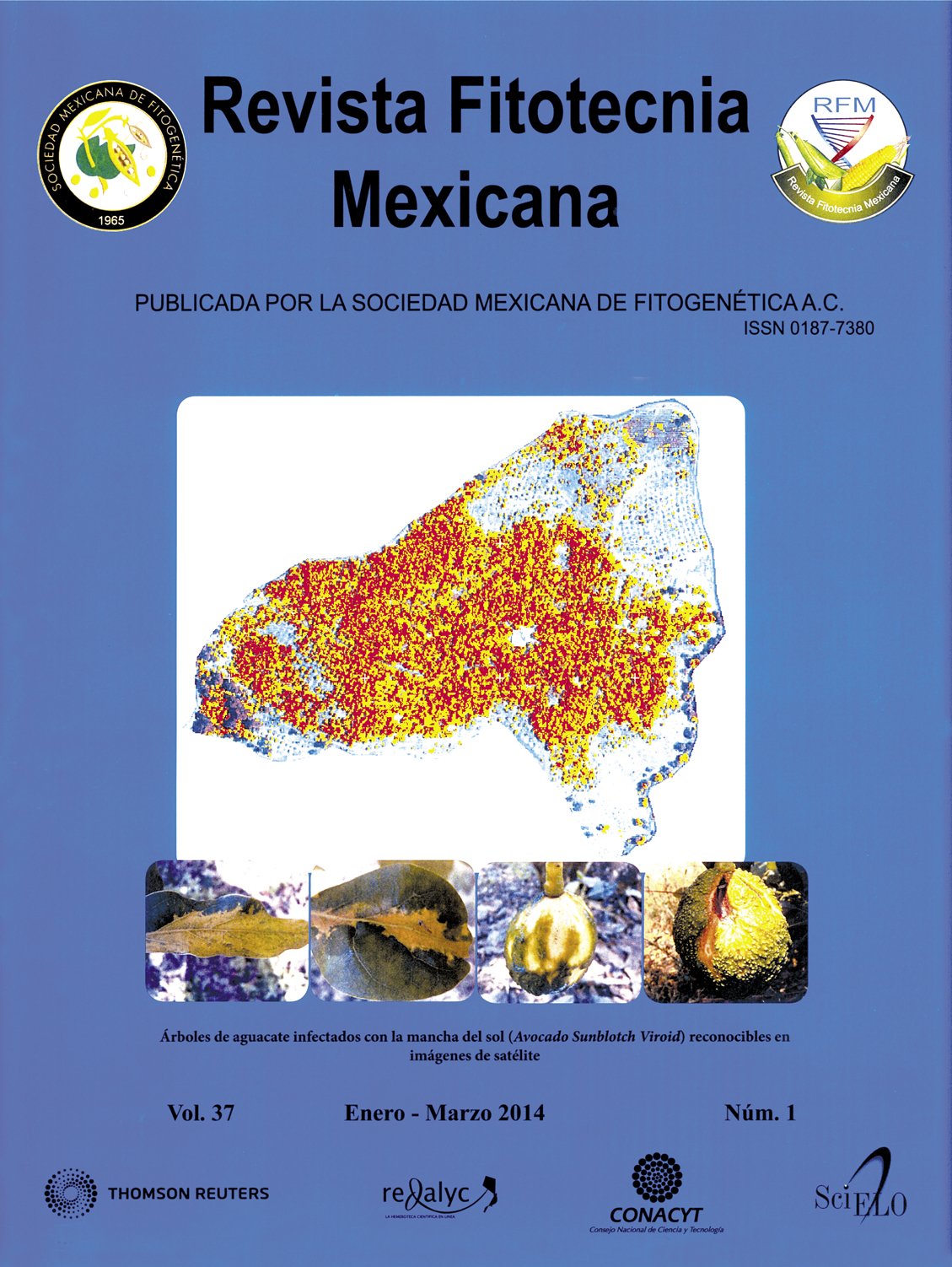MODELLING CANOLA YIELD UNDER DIFFERENT SOIL WATER CONTENTS
Main Article Content
Abstract
Canola oil has an elevated demand in the market because of its high quality for human consumption, and because the plant (Brassica napus L.) it is a viable alternative for crop rotation due to its low water requirements. This study was done at Gómez Palacio, Durango, in 2009, with the aim to find math reliable models to predict grain production under different soil water stress regimes referred to water consumption at two developmental stages. Following the San Cristobal Treatment Design, seven treatments of available soil moisture content (HAC, %): [40-40, 40-80, 60-60, 60-100, 80-40, 80-80, and 100-60] in combination with two development stages (vegetative, from emergence to beginning of flowering; and reproductive from the beginning of flowering to physiological maturity), were tested. The experimental design was a randomized block with four replicates. Measured variables were: grain yield (kg ha-1), water use efficiency (kg m-3), evapotranspiration (mm), and soil moisture depletion (%). Results showed that the highest grain yield and water use efficiency (3.3 t ha-1 and 0.585 kg m-3) were obtained when canola was grown under 65 and 61 % HAC at vegetative and reproductive stages, respectively. Prediction models showed that canola maximizes grain yield (3.15 t ha-1) when consumed 21 and 35 cm of water during the vegetative and reproductive developmental stages, respectively.

